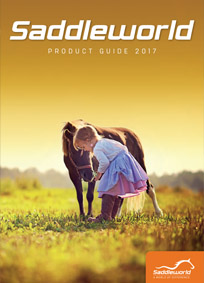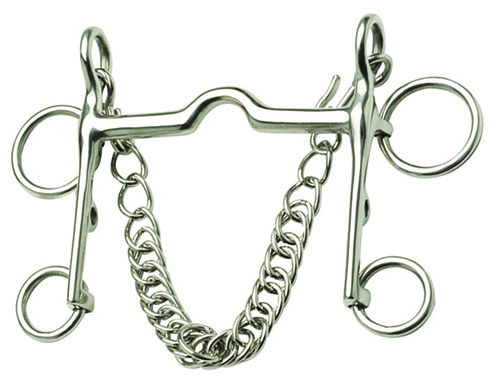- Home
Welcome to Saddleworld!
The Saddleworld Website is a showcase
of a selected range of products that are available from any Saddleworld throughout Australia.If you would like to purchase a specific product, please contact your nearest store.
Click on Our Stores to find your nearest Saddleworld Store!
- Brands
- Products
Saddleworld Products & Brands
Saddles
Bridlewear
Tack Room
Horse Boots
- Kentucky »
- Eurohunter »
- Eurohunter »
Helmets
- Our Stores
Choose your nearest store
New South Wales
Queensland
South Australia
- Evandale »
- Gawler »
- Mt Barker »
- Mt Gambier »
- Wangara »
- Devonport »
- Launceston »
Western Australia
Tasmania
- News & Tips
- Catalogues
2017 Saddleworld Product Guide Out Now!

The 2017 Saddleworld Product Guide is out now.
Visit your nearest Saddleworld store and pick up your FREE copy today.
View the 2017 Product Guide Online Now!- About Us

Saddleworld Bitting and Bit Care Guide
 Saddleworld Bitting and Bit Care Guide - “Saddleworld Media”
Saddleworld Bitting and Bit Care Guide - “Saddleworld Media”
The bit is the primary point of contact and control used for riding horses. While a number of riding styles and disciplines manage this point of control differently and in some cases, eliminating the bit completely, the concept of a bit and bridle is fundamental. It is also acknowledged that incorrect bitting, clumsy or incorrect early training or a horse with a mental block or some other resistance to accepting the control of the bit will hinder the progress of training and make harmonious horsemanship impossible.

In many fields of equine sport such as racing, dressage, eventing, showjumping, and western, a measure of the horse’s aptitude and assessment of the rider’s ability to influence performance will be expressed in terms of the horse’s acceptance of the bit. A compliant well-trained horse will often be described as “taking a good contact” or “nicely into the hand” or “accepting the bit” and the importance of using the right bit cannot be underestimated. Before deciding on the best bit for a horse, the rider must consider- Their riding level and skill.
- The level of training and the discipline that the horse is being trained for.
- The shape and size of your horse's mouth. And any teething issues.
The rider should aim to use the mildest bit that still allows clear communication with the horse. Most horses go very well in a simple snaffle or double-jointed snaffle (see links below). It may be necessary to experiment a little to find the right bit for each individual horse. Many horses are trained as youngsters in a snaffle, and are ridden in snaffles for their whole lives. If you are pleasure riding in a western or endurance saddle a snaffle bit is usually the best choice, even if the horse is not expected to take contact, or the rider will neck rein.

Beginner riders should never use curb bits or bits with a shank and chain, as they are likely to balance themselves on the rein and inadvertently jab on the horse’s mouth or deliver instructions that were not intended. Often horses are said to be difficult or resistant and the real cause of the problem is the rider’s rough or untrained use of the reins. Curbed bits and double bridles are to add a refinement to the performance of a well-trained horse and only to be used by riders with very good balance and an independent seat.There are many bits available and many of them give unique benefits which can be difficult to understand and most horse people will share stories of finding the right bit, and knowing very quickly that the horse is comfortable and they have effective control which and allows for productive training without causing problems or resistance. Finding the right bit can involve much dedicated research and open-minded discussion with people who have years of experience to stand behind their recommendations.
A visit to your saddlery store will confirm that the choice of bit and bitting issues are a complex matter, requiring specific expertise. For less experienced riders and horse owners, it is important to seek expert guidance from people like a vet or horse dentist, who should be able to identify any considerations which need to be made for an individual horse. With knowledge of any specific conformational issues or teething status, the expert at your local Saddleworld store will help you to make the right choices.
With bitting, it is widely accepted that a soft and gentle actioned bit is always the best place to start and correct training goes hand in hand with acceptance. Riders would be warned against believing the horse is resistant, when it may be their insecure contact and a sensitive horse that is causing a lack of harmony. Riders should always be prepared to seek help to ensure that they are not the cause of any problems and that the gear is correctly fitted.
It is not in the scope of this article to try and explain the unique features of the many hundreds of bits that are available, but more to outline the main aspects of choosing and caring for the bit.
It will become clear that the price range of bits can vary as much as the many brands and styles which are available. Manufacturers offer an abundant choice of metals, synthetic and rubber mouthpieces – and all claims to offer benefits in certain situations or as an aid to overcoming certain bitting problems.
Dressage is one discipline that takes a keen interest in the horse’s acceptance of the bit and way of going. This sport provides a comprehensive list of approved bits and a list of those, which are not permitted in competitions. There is a gear checking process at all events to ensure that rider’s comply.
It is often questioned that dressage horses competing above Medium standard (Advanced, Prix St Georges, Intermediate 1 & 11, and Grand Prix) must compete in a double bridle and the rider must wear spurs. This has been the subject of controversial conjecture, but can be explained. At the higher levels, the Double Bridle and wearing of spurs is the “uniform” and the rider is given great scope to manage the equipment in a way to bring out the best in their horse.
In order to create a “level playing field” for all horses, the FEI Dressage rules require that all horses wear the same gear. It is quite common for a horse to be happier in a snaffle bridle particularly in the early days of their more advanced dressage training, but as they progress they are required to wear the Approved saddle and bridle to ensure that each horse is presented in the same way and shows acceptance and harmony with the rider.
No matter what discipline, level of training or standard of the rider there is one common requirement and procedure that is of great importance – CLEANLINESS – and a daily routine for keeping the bit clean. This is a courtesy to the horse and yet often overlooked. Dried saliva, perhaps with the remains of feed or a treat that may be given following work can dry on the bit and if it is not thoroughly washed off, sets like sand paper making a highly abrasive surface which cones against the horse’s mouth. When the rider uses the reins the rough edge comes against the most sensitive part of the horse and can set up a chafe. What horse would like this???
Part of packing up the tack after working the horse should be to dunk the bit into a bucket of water or run under the tap, making sure that the surfaces and joins are completely clean. This is a small effort that gives great assurance and a part of horsemanship that must never be neglected.
There is a lot of instructional material written on the subject of bits and bitting and an Internet search will reveal a great deal of very helpful information. Riding clubs, local instructors and your local Saddleworld store will be a very useful source of further information that will help you to identify the best bit and one that will be approved for the discipline for which you train your horse.
links to a Equestrian Australia's approved and non-approved bits for competition.
The links below will take you to Equestrian Australia’s pages relating to bits that are allowed, and those, which are not permitted for Dressage competitions and the Dressage phase at Eventing competitions.
This information is most helpful when choosing the right bit. It is not recommended that a rider/trainer use a bit for everyday training that is not allowed in competition meaning that they will have to compete in gear that is unfamiliar to the horse.
Click Here: for EA Approved Bits for Dressage
Click Here: for Myler Bits Approved for Dressage
Click Here: EA NON Approved Bits for Dressage
Click Here: EA NON Approved Bit for Dressage
- Rotary Curb Bit
Click Here: EA NON Approved Bit for Dressage
- Robart Pinchless Snaffle











 Brands
Brands
Ammo
Eurohunter Rugs
Grazioli Boots
Kentucky Horseware
PDS Carl Hester Collection
Pessoa Saddles
Prestige Saddles
Thorowgood
Trainer’s
Sponsored Events
Saddleworld Melbourne International 3DE
Saddleworld Australian Youth Showjumping Championships
Saddleworld Brisbane CDI
PSI Dressage & Jumping with the Stars
Copyright © 2013 Saddleworld Pty Ltd.
Taking care of all your horse needs. Saddles, horse rugs, riding equipment, bridles, saddlery, clothing, veterinary supplies. All Rights Reserved.
Home | Privacy Policy | Pricing Policy | Contacts | Join - Products


